
Cooyar War Memorial is a heritage-listed war memorial in Hack Menkins Park, McDougall Street, Cooyar, Toowoomba Region, Queensland, Australia. The memorial was unveiled on Saturday 14 July 1923 by Arthur Edward Moore. It was designed and produced by R. C. Ziegler and Son and cost £413/10/0, with funds raised by public subscriptions and revenue raised from entertainments. The memorial comprises two pieces, the pedestal surmounted by a digger statue, on which the names of the 25 fallen are recorded, and a smaller plinth which records the names of the 110 local men who served in World War I. It was added to the Queensland Heritage Register on 21 October 1992.

Goombungee War Memorial is a heritage-listed memorial at Hartwig Street, Goombungee, Toowoomba Region, Queensland, Australia. It was built in 1920 by R C Ziegler and Son. The architect was Harry Marks. It was added to the Queensland Heritage Register on 21 October 1992.

Boer War Memorial is a heritage-listed war memorial at Crescent Street, Gatton, Queensland, Australia. It was designed by William Hodgen and produced by Toowoomba mason William Bruce. It was built in 1908, and was unveiled on 3 August by Governor of Queensland, Lord Chelmsford. The memorial honours four local men who died in or as a result of the war, and is one of only three known Boer War memorials in Queensland. It is also known as the Fallen Soldiers Memorial and the South African War Memorial.
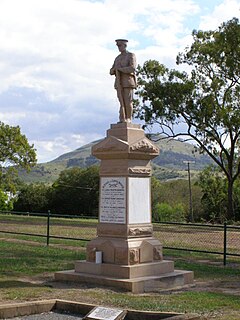
Ma Ma Creek War Memorial is a heritage-listed memorial on the Gatton-Clifton Road, Ma Ma Creek, Queensland, Australia. It was completed in 1920. It was added to the Queensland Heritage Register on 21 October 1992.

Boonah War Memorial and Memorial Park is a heritage-listed memorial at Park Street, Boonah, Scenic Rim Region, Queensland, Australia. It was built from 1920 to 1922. It was added to the Queensland Heritage Register on 21 October 1992.

Booval War Memorial is a heritage-listed memorial at Green Street, Booval, City of Ipswich, Queensland, Australia. It was built in 1919. It was added to the Queensland Heritage Register on 21 October 1992.

Hotel Metropole is a heritage-listed hotel at 253 Brisbane Street, West Ipswich, City of Ipswich, Queensland, Australia. It was designed by George Brockwell Gill and built in 1906. It was added to the Queensland Heritage Register on 21 October 1992.
George Brockwell Gill (1857–1954) was an architect in Ipswich, Queensland, Australia. Many of the buildings he designed are heritage-listed.

Bostock Chambers is a heritage-listed office building at 169-175 Brisbane Street, Ipswich, City of Ipswich, Queensland, Australia. It was designed by George Brockwell Gill and built in 1915. It was added to the Queensland Heritage Register on 21 October 1992.
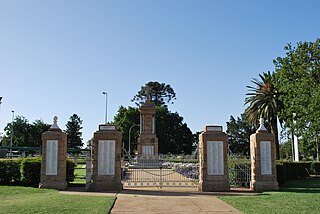
Warwick War Memorial and Gates is a heritage-listed memorial at Fitzroy Street, Warwick, Southern Downs Region, Queensland, Australia. It was built from 1923 to 1924. It was added to the Queensland Heritage Register on 21 October 1992.

St Paul's Anglican Church is a heritage-listed church at 124 Brisbane Street, Ipswich, City of Ipswich, Queensland, Australia. It was built from 1855 to 1929. It was added to the Queensland Heritage Register on 21 October 1992.
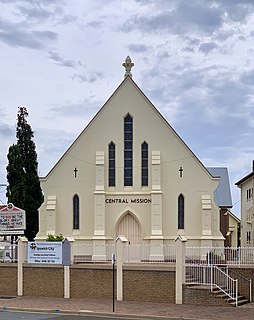
Ipswich Central Mission is a heritage-listed Uniting church at Ellenborough Street, Ipswich, City of Ipswich, Queensland, Australia. It was designed by Samuel Shenton and built in 1858 by Samuel Shenton. It is also known as Wesleyan Chapel, Ellenborough Street Church, and Ipswich City Uniting Church. It was added to the Queensland Heritage Register on 21 October 1992.
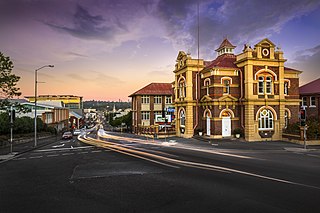
Queen Victoria Silver Jubilee Memorial Technical College is a heritage-listed technical college at 88 Limestone Street, Ipswich, City of Ipswich, Queensland, Australia. It was designed by architect George Brockwell Gill and built from 1897 to 1937. It is also known as Ipswich TAFE College and Ipswich Technical College. It was added to the Queensland Heritage Register on 21 October 1992.

Soldiers' Memorial Hall is a heritage-listed community hall at 63 Nicholas Street, Ipswich, City of Ipswich, Queensland, Australia. It was designed by George Brockwell Gill and built by F.J. Lye from 1920 to 1921. It is also known as Memorial Hall. It was added to the Queensland Heritage Register on 21 October 1992.
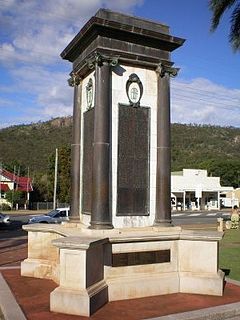
Esk War Memorial is a heritage-listed memorial at Ipswich Street, Esk, Somerset Region, Queensland, Australia. It was designed by George Brockwell Gill and built in 1920 by Frank Williams & Co. It is also known as Esk Memorial Park. It was added to the Queensland Heritage Register on 21 October 1992.

Howard War Memorial is a heritage-listed memorial at William Street, Howard, Fraser Coast Region, Queensland, Australia. It was built in 1921. It was added to the Queensland Heritage Register on 21 October 1992.
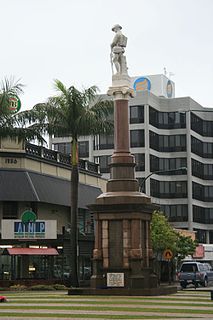
Bundaberg War Memorial is a heritage-listed memorial at Bourbong Street, Bundaberg Central, Bundaberg, Bundaberg Region, Queensland, Australia. It was designed by Frederic Herbert Faircloth and built from 1920 to 1921 by Anselm & Odling (Sydney). It was added to the Queensland Heritage Register on 21 October 1992.

Bundaberg War Nurses Memorial is a heritage-listed memorial at Bourbong Street, Bundaberg West, Bundaberg, Bundaberg Region, Queensland, Australia. It was built in 1949 by Zero Ziegler. It was added to the Queensland Heritage Register on 21 October 1992.
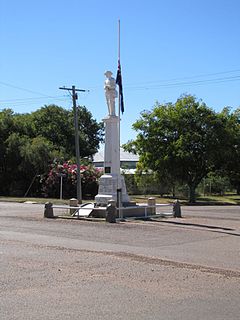
Aramac War Memorial is a heritage-listed memorial at Lodge Street, Aramac, Barcaldine Region, Queensland, Australia. It was designed and built by F M Allan in 1924. It was added to the Queensland Heritage Register on 21 October 1992.

Barcaldine War Memorial Clock is a heritage-listed memorial at Ash Street, Barcaldine, Barcaldine Region, Queensland, Australia. It was designed and built in 1924 by monumental masons Andrew Lang Petrie and Son. It was added to the Queensland Heritage Register on 21 October 1992.





















